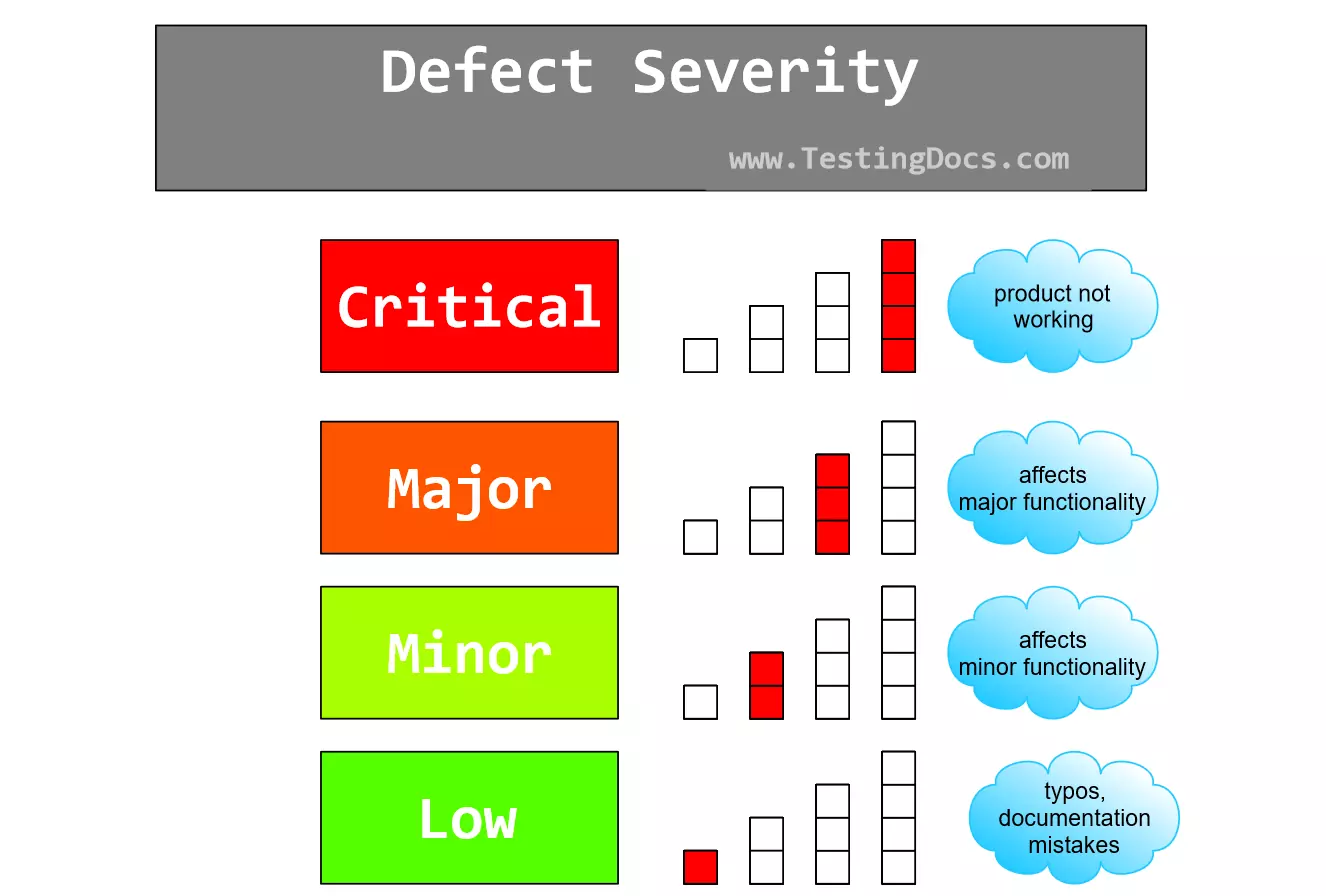Defect Severity
Overview
In this tutorial, we will discuss Defect Severity, which refers to the degree of impact caused by a defect, issue, or problem found in a product, system, or process. In simple terms, it is defined as the degree of impact a defect has on the application being tested( AUT).
Defect Severity
Defect severity is typically categorized into several levels, each describing the defect’s potential consequences and impact. The severity levels and definitions can vary between industries and organizations. Organizations may have their severity categories tailored to their products and customer expectations.
This section will describe some common severity levels often used in the software industry. In general, defect severity can be classified as follows:
- Critical
- Major
- Minor
- Low

Critical
The critical defect affects the critical functionality of the software product. Defects classified as critical are the most severe. They have a severe impact on the system’s functionality, often rendering it unusable or causing significant damage. Critical defects may lead to system crashes, data loss, or security breaches, posing a high risk to users or the organization.
Examples of Critical defects: Defect that leads to system crash, failure of a software feature, etc.
Major
Defects classified as high-severity can have serious impacts on the system’s functionality, but they may not necessarily lead to a complete system failure. Such defects can result in major functionality issues, data corruption, or significant operational disruptions. On the other hand, major defects are those that have a high severity and affect the software’s functionality. However, these types of defects usually have a workaround. For instance, the functionality may not be working as expected, but it can still be accessed using tweaks or additional steps.
Minor
Minor defects may cause some undesirable behavior, but they do not significantly impact the system’s critical functionality. Although they may reduce system efficiency and cause inconvenience, they can still be worked around. Despite not being critical, prompt attention is necessary to maintain the quality of the product and ensure user satisfaction. Minor defects have an easy workaround.
For example: A webpage link is not working, however, the page can be accessed from another web page.
Low
Low severity defects do not affect the system’s functionality. They typically represent cosmetic defects or non-essential features and do not impact the productivity or efficiency of the software. These defects are often considered minor inconveniences and may be addressed in future releases or updates.
Examples of low-severity defects are typos and spelling mistakes, grammatical errors, etc.
The classification of defect severity is essential in prioritizing bug fixes and determining which issues need immediate attention. Critical and high-severity defects are typically addressed with the highest priority to ensure the product’s stability, safety, and user satisfaction. Medium and low-severity defects are often addressed in subsequent releases or updates, depending on their impact and available development resources.





